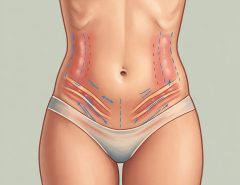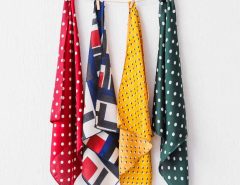Are you tired of wearing the same clothes as everyone else, or do you have a unique fashion sense that you want to express through your wardrobe? Designing your own clothes can be a fulfilling and creative endeavor that allows you to showcase your individual style. In this article, we’ll take you through the step-by-step process of how to design your own clothes, from conceptualization to the finished garment.
There are 8 Steps Process of Designing Your Own Clothes
Inspiration and Research
Find Your Style
Before you dive into designing, it’s crucial to understand your personal style. Explore fashion magazines, Pinterest boards, Instagram, and other sources of fashion inspiration to pinpoint the aesthetic you want to create. Are you drawn to boho chic, vintage, minimalistic, or avant-garde styles? Define your preferences to guide your design process.
Research Fabric and Materials
Understanding different fabrics and materials is essential for successful clothing design. Research the characteristics, drape, and texture of fabrics to ensure they align with your design vision. Take into consideration factors like comfort, durability, and seasonality when selecting materials.
Sketching Your Ideas
Create a Fashion Sketchbook
Invest in a dedicated fashion sketchbook where you can draw, doodle, and jot down your clothing design ideas. Sketching is a fundamental step in the design process, allowing you to visualize your concepts and refine your designs over time. You don’t need to be a professional artist; simple sketches will suffice.
Design Silhouettes
Start by sketching the basic silhouettes of your garments, such as dresses, tops, or pants. Focus on the overall shape and proportions. Experiment with different necklines, sleeve lengths, and hemlines to bring uniqueness to your designs.
Add Details
Once you have the basic silhouettes, add details like buttons, zippers, pockets, and embellishments. These elements can elevate your designs and make them stand out. Pay attention to the placement and size of these details to achieve the desired aesthetic.
Pattern Making
Learn Pattern Making
Pattern making is a critical skill in clothing design. You can either learn it yourself through online tutorials and books or seek assistance from a professional pattern maker. Patterns serve as templates for cutting and sewing fabric pieces, ensuring that your designs fit correctly.
Create Custom Patterns
Design custom patterns based on your sketches and measurements. Take accurate body measurements or the measurements of the person who will wear the garment. Use these measurements to draft patterns that will result in a well-fitting garment.
Fabric Selection and Cutting
Choose Quality Fabrics
Select high-quality fabrics that align with your design vision. Pay attention to factors like color, texture, and weight. Consider how the fabric will feel against the skin and how it will drape on the body. Purchase the necessary yardage based on your pattern requirements.
Cut Fabric Pieces
Lay out your patterns on the chosen fabric and carefully cut out the pieces. Precision in cutting is crucial to ensure that your garment comes together seamlessly.
Sewing and Assembly
Sewing Techniques
Whether you’re a novice or an experienced seamstress, sewing techniques are key to bringing your designs to life. Learn and practice various sewing stitches and techniques, such as straight stitching, zigzag stitching, and serging. These skills will help you join fabric pieces, create seams, and finish edges neatly.
Assemble Your Garment
Follow the assembly instructions from your patterns, sewing each piece together to create the garment. Take your time to ensure accuracy and precision. If you encounter difficulties, don’t hesitate to seek guidance from sewing tutorials or local sewing communities.
Testing and Fitting
Test Fit
During the garment assembly process, periodically try on the partially finished piece to check for fit and comfort. Make necessary adjustments if the garment doesn’t fit as expected. It’s easier to address fit issues while the garment is still in progress.
Final Fitting
Once you’ve completed the sewing, conduct a final fitting to ensure the garment fits perfectly. Make any last-minute alterations if needed to achieve the desired fit and style.
Finishing Touches
Hemming and Detailing
Finish the edges of your garment with appropriate hems, such as rolled hems or blind hems. Add any final embellishments, buttons, or closures to complete the look. Take your time with these finishing touches to achieve a professional appearance.
Showcasing Your Creations
Photography
Capture high-quality images of your finished garments. Good photography can make a significant difference when showcasing your designs online or to potential clients.
Social Media and Portfolio
Share your creations on social media platforms, create an online portfolio, or consider participating in local fashion events or markets to gain exposure and feedback for your designs.
FAQs
How do I find inspiration for designing my own clothes?
Finding inspiration for designing your own clothes can be an exciting part of the creative process. Start by exploring fashion magazines, following fashion influencers on social media, and creating Pinterest boards dedicated to your style preferences. Attend fashion events, visit art exhibitions, and observe everyday life for unique ideas. Additionally, consider your personal experiences, cultural influences, and emotions as potential sources of inspiration. Over time, you’ll develop a keen eye for design inspiration all around you.
Do I need to be a professional artist to sketch my clothing designs?
No, you don’t need to be a professional artist to sketch your clothing designs. While refined artistic skills can be beneficial, basic sketching abilities are sufficient to convey your ideas. Use a fashion sketchbook to practice drawing basic silhouettes and add details gradually. The primary goal is to visualize your design concepts, so even simple sketches can serve this purpose. As you gain experience, your sketching skills will naturally improve, allowing you to communicate your ideas more effectively.
How can I learn pattern making for designing my own clothes?
Learning pattern making is a valuable skill in designing your own clothes. You have several options to acquire this skill:
Online Resources:
Numerous online tutorials, courses, and video demonstrations are available for free or at a cost. Websites like Craftsy and Skillshare offer comprehensive pattern making classes.
Books:
Invest in pattern making books written for beginners. These often provide step-by-step instructions and detailed illustrations.
Local Classes:
Check if there are sewing or fashion design classes in your area that offer pattern making courses. Community colleges or sewing studios often provide these resources.
Professional Assistance:
If you’re serious about clothing design, consider hiring a professional pattern maker for one-on-one guidance and custom pattern creation. This can be particularly helpful if you have complex designs in mind.
Conclusion
In conclusion, designing your own clothes is a rewarding and creative journey that allows you to express your unique style. With inspiration, research, practice, and dedication, you can turn your fashion ideas into beautifully crafted garments that reflect your personal flair. So, pick up your sketchbook, grab your sewing machine, and start designing the wardrobe of your dreams.
Tags: clothes designer, clothing designer, designer fashion, designing clothes




Leave a Reply